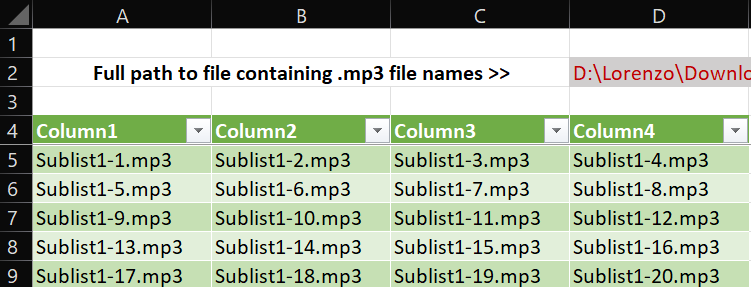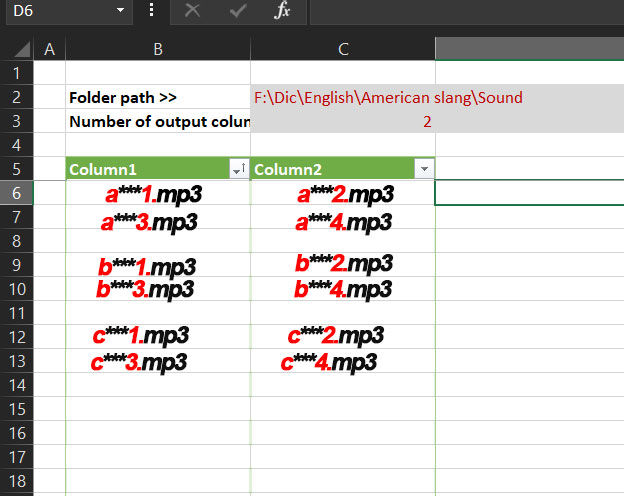
I wasn't expecting a big RAR file but the .txt file only
Due to the structure (SublistNumber-FileNumber) of your file names I revised the query => Output:

Updated workbook available here
This browser is no longer supported.
Upgrade to Microsoft Edge to take advantage of the latest features, security updates, and technical support.

Hi,
I want to export 1000 file names into a excel doc with 4 columns by the following instruction:
File-1.mp3 =>> column 1
File-2.mp3 =>> column 2
File-3.mp3 =>> column 3
File-4.mp3 =>> column 4
File-5.mp3 =>> column 1
File-6.mp3 =>> column 2
File-7.mp3 =>> column 3
File-8.mp3 =>> column 4
.
.
.
File-997.mp3 =>> column 1
File-998.mp3 =>> column 2
File-999.mp3 =>> column 3
File-1000.mp3 =>> column 4
All files ended with number at the end…sorted by numbers from 1 to 1000 (exactly like above)




Hi @Amin2234
With Get & Transform aka Power Query
1/ Download that Excel file
2/ In a command prompt (CMD):
2/ In Excel:


As you experienced it's not DIR *.mp3 > FileNames.txt but DIR *.mp3 /B > FileNames.txt - my bad :( + sorry about that
That said, I renamed my dummy files and without changing anything in the query I get the expected result:

I currently have no idea why this doesn't work as expected on your side. Could you:

Could you please check this file too and let me know sort it? Must be sorted according to the alphabet and number.

